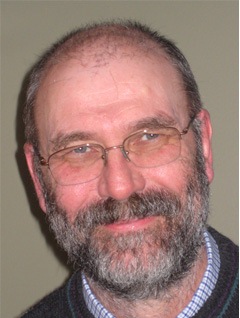Wilfried Haensch, IBM TJ Watson Research Center, Yorktown Heights NY

Short biography: Wilfried Haensch received his Ph.D. in 1981 from the Technical University of Berlin, Germany in the field of theoretical solid state physics. He started his career in Si technology 1984 at SIEMENS corporate research Munich. There he worked on high field transport in MOSFETs. In 1990 he joined the DRAM alliance between IBM and SIEMENS to develop quarter micron 64M DRAM. From there he moved in 1996 to INFINEON’s manufacturing facility in Richmond VA to be involved in the production of various generations of DRAM. In 2001 he joint IBM TJ Watson Research Center to lead a group for novel devices and applications. In this function he was responsible for the exploration of device concepts for 15nm node and beyond, new scaling concepts for memory and logic circuits, including 3D integration. He is currently responsible for post CMOS device solution and Si technology extensions. This includes carbon electronics for RF and digital applications and optical and electrical material properties of graphene and carbon nano tubes. He is the author of a text book on transport physics and author/co-author of more than 100 publications. He was awarded the Otto Hahn Medal for outstanding Research in 1983. He was named IEEE Fellow in 2012.
Title: Carbon Electronics - what can we do with it ?
Abstract: The slow down of scaling intensified the search for the “next switch”. The dream is, of course, to find a new switching element that can replace the conventional transistor. Preferably with out any change of the existing infra structure – new materials and fabrication methods would be tolerated. Due to its superb thermal and electrical transport properties carbon in form of graphene or carbon nanotubes (CNTs) is considered as a natural successor of the current available technology solutions in the digital and RF space. In both, graphene and CNTs, devices can be build that resemble very closely the existing device structures and would therefore fit into the existing technology ecosystem with out major interruptions. However, graphene and CNT based device technologies come with their own challenges that have to be overcome to insert them into a technology. I will discuss current progress in graphene and CNT device research and will provide insight in possible application spaces for these materials. A brief out look is given on how graphene could be used for none conventional device architecture solutions.